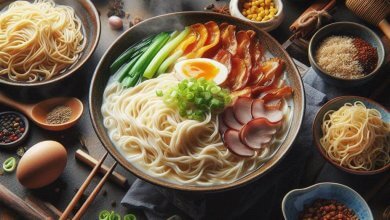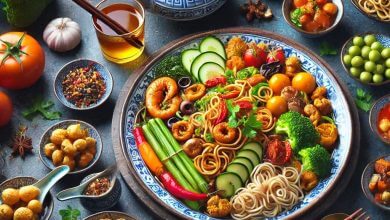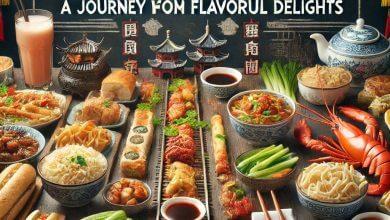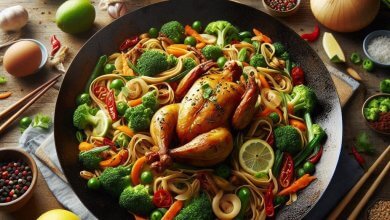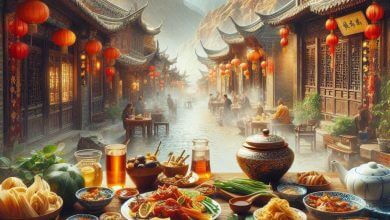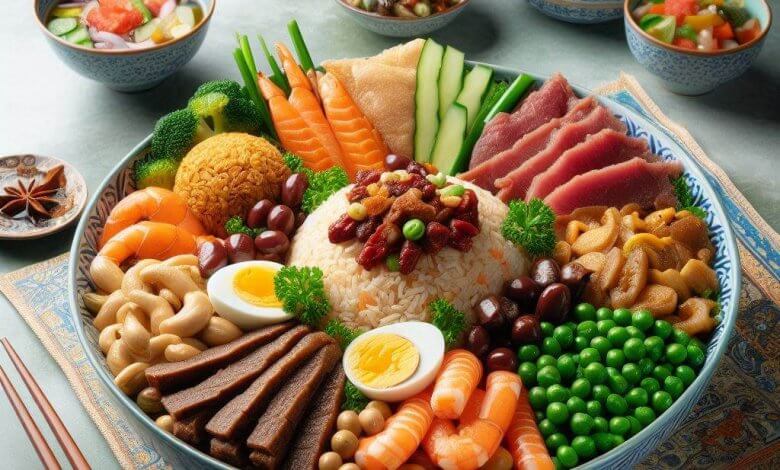
Many one-of-a-type ethnic organizations call China domestic, and its Muslim communities—particularly the Hui, Uyghur, and Dongxiang—have advanced their non-public rich culinary traditions. By avoiding pork and alcohol and using fantastic spices and culinary strategies, those businesses adhere to halal dietary policies. The final results is a notable and attractive interpretation of Chinese food that combines factors from the Middle East and Central Asia.
We check the various most well-known halal Chinese food which can be fed on via the usage of Muslim companies around China in this weblog.
1. Lanzhou Beef Noodles (兰州牛肉拉面)
Gansu Province’s capital, Lanzhou, is famous for its hand-pulled red red meat noodles. Made with the help of the Hui Muslim human beings, this meal includes:
Wheat noodles which is probably hand-stretched
Beef broth this is scrumptious but smooth
Thin purple beef slices which might be halal
Spices and aromatic herbs like cilantro, chili oil, and garlic
In addition to being aesthetically attractive, Lanzhou beef noodles are famend for their golden broth, white radish slices, and colourful red chili oil.

2. Big Plate Chicken (大盘鸡 – Dàpánjī)
Originally from Xinjiang’s Uyghur Muslim network, Big Plate Chicken is a filling, surprisingly spiced dish it certainly is great for sharing. It consists of:
Bird quantities which can be easy
Both bell peppers and potatoes
A thick, hot sauce made from tomatoes
Noodles pulled thru hand, big, added at the give up
This meal, which combines Chinese spices, cumin, and chili peppers to offer a upward thrust up of tastes, exemplifies Xinjiang’s Central Asian influences.
3. Kao Baozi (烤包子) – Baked Meat Buns
Kao Baozi, or oven-baked buns full of succulent lamb or pig, are a not unusual snack in Xinjiang. These are notable from conventional Chinese steamed baozi due to the fact they’ve a easy inner and a crispy outside. Typically, the filling consists of:
Red meat or minced lamb
Garlic with onions
Cumin, black pepper, and particular heat seasonings
These buns are normally located at Uyghur consuming places and night time time time markets, wherein they may be ate up as a satisfying and speedy street snack.
4. Ding Ding Chao Mian (丁丁炒面) – Uyghur Stir-Fried Noodles
A Xinjiang stir-fried noodle dish called Ding Ding Chao Mian makes use of tiny, chopped wheat noodles which can be prepared with:
Beef or lamb
Onions with tomatoes
Garlic with bell peppers
Chili and cumin combine to create a powerful, smokey taste.
This dish demonstrates the have an impact on of the Silk Road with the aid of the use of fusing tastes from Middle Eastern and Central Asian cuisines with Chinese stir-frying strategies.
5. Kao Yang Rou Chuan (烤羊肉串) – Halal Lamb Skewers
Lamb skewers, one of the maximum prized street food in Muslim communities in China, are cooked over an open flame and lavishly crowned with:
Chili powder with cumin
Black pepper with garlic
Add sesame seeds for crunch.
These skewers, that have a strong fairly spiced sensation and an appealing smokey taste, are a mainstay in halal consuming places and night time markets in Xinjiang.
Conclusion
Muslim groups in China have superior a rich and severa culinary records by using way of the use of fusing conventional Chinese cooking strategies with Islamic dietary tips. These food, which variety from Xinjiang-fashion lamb skewers to Lanzhou pig noodles, showcase a one-of-a-type combination of tastes which have been impacted through using centuries of cultural and Silk Road exchange.
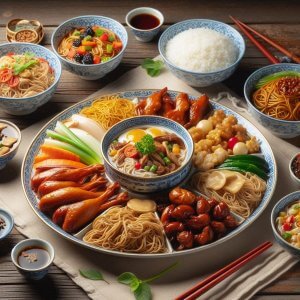
Try those genuine, tasty meals to get a sense of China’s Muslim culinary traditions if you ever journey to China or visit a halal Chinese eating place.
